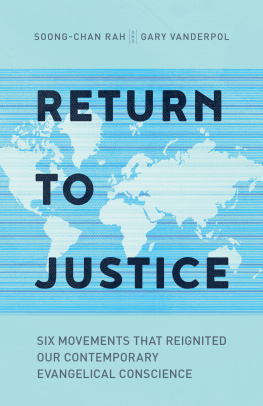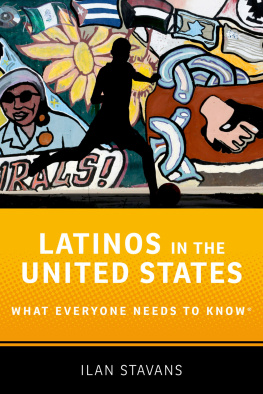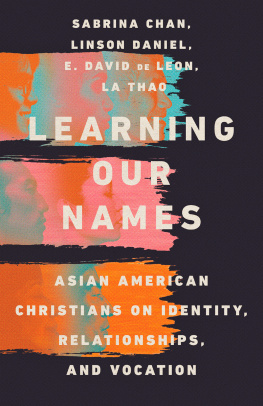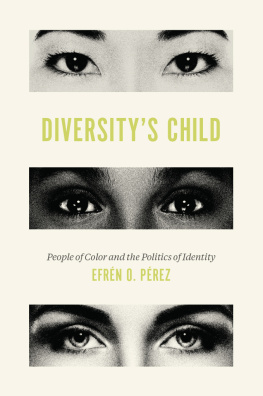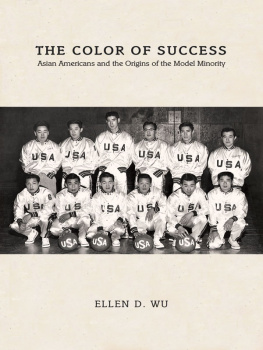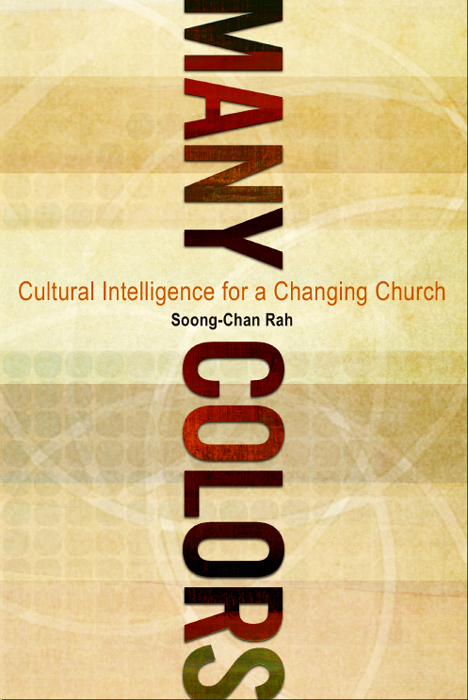Praise for Many Colors
In the past decade something new and important has emerged: Readers are now able to wade through a huge pool of books on multiethnicity/multiculturalism and the church. If you have been waiting for the handbook needed to navigate these new waters, this is it! Soong-Chan Rahs Many Colors will become the standard for Christians who want to understand and practice cross-cultural intelligence. The church desperately needed a book reflecting the depth and breadth of this defining work. Soong-Chan has delivered!
Randy Woodley, Distinguished Associate Professor of Faith and Culture, George Fox University, and author of Living in Color: Embracing Gods Passion for Ethnic Diversity
Many Colors is a must-read for those who are serious about being the church in practice and not just theory. Dr. Rah skillfully integrates theological, psychological, sociological, and practical information concerning cultural understanding needed for a church that is increasingly becoming multiethnic and multicultural. Finally, a book on cultural understanding for the church that is not sociology sprinkled with some Scriptures, but is solidly built first on the foundation of Scripture, which reveals Gods priorities for our relationships.
Rodney Cooper, Professor of Discipleship and Leadership development, Gordon-Conwell Theological Seminary
This is a must-read for anyone in cross-cultural ministry, as well as all who wish to engage the new multiethnic America. Rah challenges us to pursue culturally intelligent leadership, while providing a convincing biblical-theological framework and practical suggestions to help us move forward in this most important journey.
Tom Lin, Vice President of Missions, InterVarsity Christian Fellowship
MANY COLORS
Cultural Intelligence for a Changing Church
Soong-Chan Rah
M OODY P UBLISHERS
CHICAGO
2010 by
S OONG -C HAN R AH
All rights reserved. No part of this book may be reproduced in any form without permission in writing from the publisher, except in the case of brief quotations embodied in critical articles or reviews.
All Scripture quotations, unless otherwise indicated, are taken from the Holy Bible, New International Version, NIV. Copyright 1973, 1978, 1984 by Biblica, Inc. Used by permission of Zondervan. All rights reserved worldwide.
Scripture quotations marked TNIV are taken from the Holy Bible, Todays New International Version. TNIV. Copyright 2001, 2005 by Biblica, Inc. Used by permission of Zondervan. All rights reserved worldwide.
Edited by Pam Pugh
Interior design: Smartt Guys design
Cover design: LeVan Fisher Design
Cover art: Rowan Moore/Getty Images.
Library of Congress Cataloging-in-Publication Data
Rah, Soong-Chan.
Many colors : cultural intelligence for a changing church / Soong-Chan Rah.
p. cm.
Includes bibliographical references (p.).
ISBN 978-0-8024-5048-7
1. Church work with minoritiesUnited States. 2. MulticulturalismReligious aspectsChristianity. I. Title.
BV4468.R35 2010
259.08900973dc22
2010012834
We hope you enjoy this book from Moody Publishers. Our goal is to provide high-quality, thought-provoking books and products that connect truth to your real needs and challenges. For more information on other books and products written and produced from a biblical perspective, go to www.moodypublishers.com or write to:
Moody Publishers
820 N. LaSalle Boulevard
Chicago, IL 60610
1 3 5 7 9 10 8 6 4 2
Printed in the United States of America
To my wife, Sue,
for her patience and support.
To those who journeyed with us
at Cambridge Community Fellowship Church.
Contents
Introduction
A YOUNG WHITE MAN in his twenties stands awkwardly off to the side during the fellowship hour. He knows he should make the effort to talk to his fellow church members but he is intimidated by the clusters of parishioners that have already formed. Most of the groups are divided along national and ethnic lines. Each group seems to be already deeply engaged in conversation among themselves, sometimes in their own native language. He would like to join in, but he feels like he would be intruding, and anyway, he doesnt know if he could relate to them. He makes eye contact and exchanges polite nods with a number of different church members, but he has difficulty making a deeper connection. He ends up sitting at a table with other white members of his church.
An older African-American woman sits by herself in the sanctuary. Her frustration is difficult to put into words. She has been attending her church for over two years. She is one of a handful of African-Americans at the church who were attracted to a church committed to multiracial ministry and to serving the needs of her neighborhood. But over the past two years, she has become increasingly frustrated with how little the worship service addressed her spiritual needs. Her fellow church members seem to be more preoccupied with making sure the worship service ends on time than with how the Spirit is moving during the service. They seem to have a completely different set of expectations about worship. She sits silently as the worship service progresses along without her genuine participation.
A Native American man sits uncomfortably as a group of children make a special announcement for the fall festival at his church. Two of the children are dressed in native garb. They are taking what are sacred symbols and displaying them in inappropriate ways. Feathers have been placed in random locations and there is a hodgepodge of different tribal symbols thrown together. There was no sense of appreciation of the myriad of cultures that comprise the Native American communityconflating different tribal symbols simply for the sake of amusement. He is troubled by what he senses to be a lack of concern for the accurate reflection and portrayal of his culture in the church.
A young Asian-American man glances around the circle of church board members seated around the conference table. He is the only non-white member of the church board. Everyone seems to be talking all at once and seems to know when to speak up and interject their opinions. The young man is listening patiently to all the opinions being expressed but doesnt know when he should participate/jump in. He waits for someone to ask for his opinion but no one invites him into the conversation. The conversation centers on the topic of leadership diversity at the church, yet the meeting has focused exclusively on the perspective of the dominant group. Why is he even at this meeting if hes not being invited into the discussion? He feels a growing sense of frustration as the debate moves along without him. A young Latina mother watches anxiously as her five-year-old son bounces out of the sanctuary. He joins the flow of children leaving the adult worship service to attend the childrens church. She doesnt quite understand why the children are being asked to leave the service. She recognizes that there is some cultural value at work, but it escapes her. She doesnt understand the need to take the children out for a separate service. It seems like a devaluing of the children and their place in the family. She wonders if her church holds the same values as her family.
All over the United States, many churches are taking more seriously the biblical call to build and participate in multiethnic churches and communities. The state of Dr. Martin Luther King Jr.s oft-quoted statement that 11:00 a.m. Sunday morning is the most segregated time in America is now being challenged by more and more communities attempting to integrate churches and break down racial, ethnic, and cultural divisions. These attempts are a part of the good work of God bringing His will on earth as it shall be in heaven. The call to build a biblical community of faith that encompasses the diversity of races, nationalities, cultures, and ethnicities is now being seen as an important part of the churchs responsibility. There is a burgeoning movement of multiethnic congregations in the United States.


